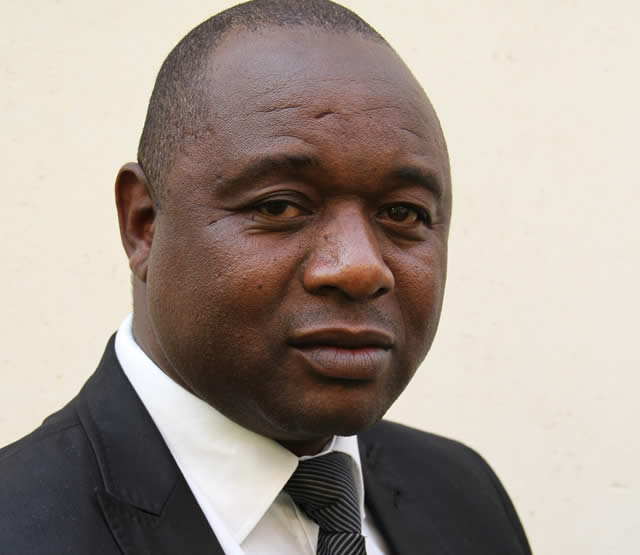Harare’s complete shutdown: The health risks

Roselyne Sachiti : Features Editor
Women and children patiently wait for their turn to fetch borehole water outside an Anglican Church in Harare’s high density suburb of Warren Park 1.It is a Saturday morning and the high density suburb and many others in the capital have been without water for a day and will go for another without it.This has become a norm as in the past months the City of Harare has been carrying out maintenance work at its Morton Jaffray treatment plant, shutting down the plant for up to three consecutive days, usually between Fridays and Sundays on selected periods.
Women like Elizabeth Moyo, a mother of two children aged five years and three months also patiently wait at this water point, which the Anglican Church gives residents access to, twice a day.
Another borehole, drilled by the Government with the support of the donor community around at the height of cholera outbreaks around 2008-9 also services the residents.
Many residents shun it as they have to manually pump water, a process that most find tiresome and slow, especially when they have to fetch up to four 25 litre buckets of water. This at least covers essentials like flushing toilets, cleaning, cooking and bathing. The water is also rusty and many fear drinking it.
The tap at the church becomes the option for many who queue there twice a day as turn-around time is shorter.
In Warren Park, water which was switched off on Friday had yet to return by Monday morning, and many of the residents had run out of options as to where to find the precious liquid.
With an average of three families, each with up to four members, staying in seven-roomed houses, all using one toilet, there have been serious concerns over the length water is cut off, and many like Mrs Moyo fear that this will result in disease outbreaks.
Lack of clean water and sanitation issues and their link to health are a nightmare many do not want to go through if the 2008 cholera outbreak is anything to by.
“Four families stay in the seven-roomed house we rent, and we have serious health fears as the toilet becomes really dirty. I cannot afford disposable nappies and need water to wash my baby’s napkins when I change him.
“We also have to wash plates, cook and we are doing this under unsanitary conditions because of the water cuts,” she said.
Mrs Moyo fetches 60 litres of water per day but it is not enough to meet her household needs.
Three 20-litre containers are used to contain paint. Also being a tenant who uses one room, she barely has space to store more water containers.
“If council cuts water for more than a day, then they should deliver water to various residential areas using bowsers. They can also provide 5 000 litre tanks of water at the corner of each street so that people do not have to walk long distances to look for the precious liquid,” suggested Mrs Moyo.
With such water challenges, something basic as hand washing after visiting the toilet becomes a luxury for many like Takawira Motsi, a vendor from the overcrowded Mbare Flats.
Motsi sells roasted maize at an open space in the suburb.
He confesses that in most cases, he does not wash his hands when he uses the bush system, a practice that has increased since the three-day water cuts by council.
“Our toilets were already a ticking time bomb long before the three-day water cuts came, and we always feared a repeat of cholera. I rarely wash my hands when I use the bush because there will be no water source nearby.
“Imagine what the situation in the toilets shared by over 100 people is like when there is no water for three days?” he said.
In Dzivarasekwa 3, another high density suburb in Harare, residents literally live without water which only comes at night, hours after people have gone to bed.
Desperate residents look for water for domestic use from various sources both clean and dirty.
Women like Tinashe Dzimba (37), a mother of four and tenant at a house shared by three other families says: “It is by the grace of God that my children have not contracted cholera. Sometimes we use the bucket system and toss the human waste in open spaces. Using the toilet at our house requires water.”
The long water cuts mainly affect high density suburbs as most residents do not have enough land to drill boreholes because of the size of their premises.
They also fear damaging sewer pipes while digging for water.
With Prince Edward Dam virtually empty and even if Morton Jaffray was to be fully rehabilitated, demand will always outstrip supply.
A fortnight ago, council’s acting corporate communications manager Mr Michael Chideme was quoted as saying that council was unable to supply water to everyone.
“We are not able to supply all the households in Harare because our water supply is low in terms of capacity.
“We are still improving our capacity at Morton Jaffray and right now, we have very low capacity at Prince Edward Treatment plant because we are not getting enough water at Prince Edward.
“The dam that supplies Prince Edward is almost gone. There is no dam and there is no water there. All the water that we used to treat at Prince Edward that supplied the southern suburbs is no longer coming from there,” he said.
In an interview with The Herald Features, he said council is doing its best to protect residents from diseases as
they give them enough notice before they completely shutdown Morton Jaffray for those who can store water to do so.
“By completely shutting down Morton Jaffray, we are actually trying to preserve the health of residents through fitting new equipment so that we will not be guilty of a bigger problem. The complete shutdowns are meant to alleviate a bigger health problem that may come,” he added.
Mr Chideme said they have currently completed 70 percent of work at Morton Jaffray. He also said the complete shutdown of Morton Jaffary carried out over the weekend is the last before the rainy season.
“The remaining 30 percent work will result in partial shutdowns in some residential areas. The shutdowns won’t be as severe,” he explained.
He added that they were improving the water supply through the installation of new equipment during the complete shutdowns and the increased number of water bursts in the city is a result of increased water pressure.
Currently, water supplied to residents by council comes from Lake Manyame, Lake Chivero and Darwendale Dam.
A few houses in some new residential areas not connected to council use borehole water.
Yet, the health risks posed by lack of water and access to sanitation are chilling.
Unsafe drinking water can be a significant carrier of diseases such as cholera, typhoid and schistosomiasis.
Drinking water if not stored in clean containers can also be tainted with chemical and physical contaminants with harmful effects on human health.
In addition to its association with disease, access to safe drinking water may be particularly important for women and children especially when there are prolonged cuts in Harare as they bear the primary responsibility of carrying water, often.
United Nations Children’s Fund Chief of Communication Mr Victor Chinyama said, no studies on linkages between water shortages and sanitation access and incidence of diarrhoeal diseases have neither been undertaken specifically for Harare nor for Zimbabwe in general.
“It is an area that has been researched extensively internationally. These studies have concluded that unsafe drinking water, along with poor sanitation and hygiene, are the main contributors to diarrhoeal disease, which mostly affect women and children.
“Thus, on the basis of this knowledge, the Government of Zimbabwe with support from UNICEF and other partners, has commissioned a number of studies which track water and sanitation coverage, and also diarrhoeal disease prevalence to provide data and evidence on areas needing intervention.
Such studies have included, inter-alia, the Zimbabwe Multiple Indicator Cluster Survey, the Zimbabwe Demographic Household Survey, amongst others,” he said.
Chinyama added at the height of the cholera outbreak in 2008, UNICEF supported the City of Harare to rehabilitate 16 boreholes in Mabvuku and Tafara high density suburbs.
“In addition, UNICEF also supported the City of Harare to drill 43 boreholes in communities and clinics in and around greater Harare.
“UNICEF also supported the City of Harare with spares and tool-kits for the maintenance of the boreholes, which also included the training of 20 City of Harare staff in the operation and maintenance of the boreholes.
UNICEF’s support ended here and the responsibility to maintain the boreholes was handed over to the City of Harare,” he added.
Mr Chinyama said water collected from unprotected sources is considered to be contaminated and to improve its quality, consumers of this water could consider the following household water treatment options:
Boiling the water: This process involves heating water to a rolling boil and is sufficient to inactivate pathogenic bacteria, viruses and protozoa. After the water has reached a rolling boil, it should be removed from the heat, allowed to cool naturally, without the addition of ice, and is to be protected from post-treatment recontamination during storage.
Household chlorination: Chlorine, used correctly with low-turbidity water, is a very effective disinfectant. There are number of options, which households could use for chlorination. These include WaterGuard, which is a ready-made sodium hypochlorite solution marketed by PSI and is available off the shelf with most retailers throughout the country. One bottle costs approximately 30c and is sufficient to treat the drinking water needs of a household of six. One capful of solution treats about 20 litres of water
Solar disinfection: Whilst the above options are effective, this is another method which does not require fuel nor significant investments as it involves reuse of Polyethylene terephthalate (PET) bottles. Solar disinfection at household level involves placing the water in clear containers.
According to MICS 2014, 72,2 percent of Harare residents did not use any form of water treatment at household level while 7,3 percent boiled their water.
Only 14,6 percent used a bleach to treat water while 0,1 strained through a cloth. Another 0,4 percent used a water filter, while 0 percent used solar disinfection. Only 0,1 percent let it stand to settle with 7,1 percent adding water treatment tablets. An estimated 0.1 percent used other means of water treatment.
The number of household members under this survey were 5 901 while those using unimproved drinking water sources totalled 129.
In Harare, 34,7 percent of residents took less than 30 minutes to go to a water source of drinking water, get water and return while 18 percent took more than 30 minutes or more.
But this is a population with 43,9 percent water on premises and times are likely to be longer especially when the supplies of a whole suburb have been shut and long queues at fetching points.
The amount of time taken to get water refers to one round trip from home to a drinking water source for household members whose water sources were located outside the premises.
“Availability of water on premises is associated with higher use, better
family hygiene and better health outcomes.
“For water collection roundtrip of 30 minutes or more, it has been observed that households carry progressively less water and are likely to compromise on the minimal basic drinking water needs of the household,” according to MICS 2014.
MICS 2014 further points out that in Harare, 54,4 percent households had no drinking water on premises collected water. Adult women collecting water totalled 71,1 percent compared to adult men at 23,6 percent. Girls under 15 totalled 2,2 percent collected water in Harare compared to boys 1,1 percent.









Comments